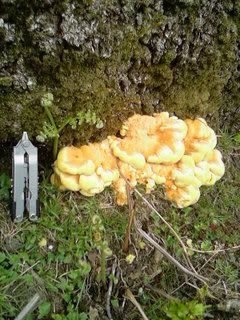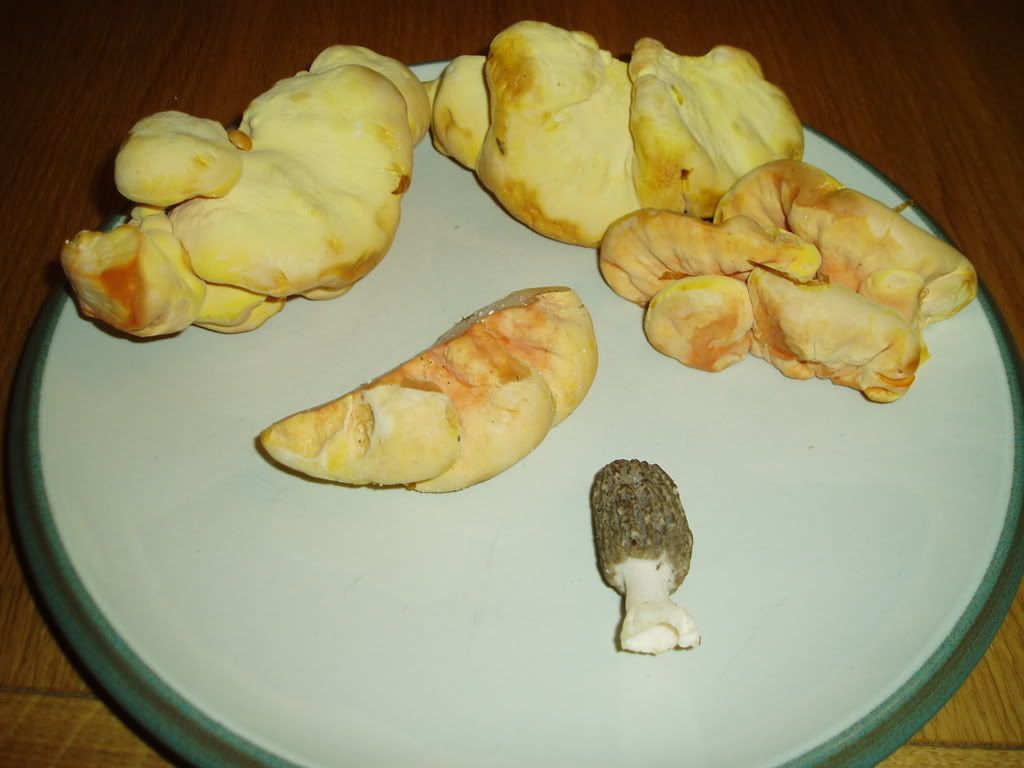I thought it might be helpful to post up a few other pictures. I went out for a quick evening forage last night there's plenty about round here.
They ranged from a small single bit on a log, probably oak or ash but too rotten to positively identify:
To a large outcrop, about 4 foot long and 3 foot high, on an huge old beach tree:
The large one was still young and I managed to pick some very tender pieces, a bit too tender for me as the texture was like raw flesh even after cooking, a bit like a firm jelly. I found the most on a couple of fallen cherry trees. In the past I've also found it on yew (although I wouldn't pick it from such a poisonous tree), willow and sycamore.
I must track down some other recipes as it's very common round here and also one you can inoculate logs with.





